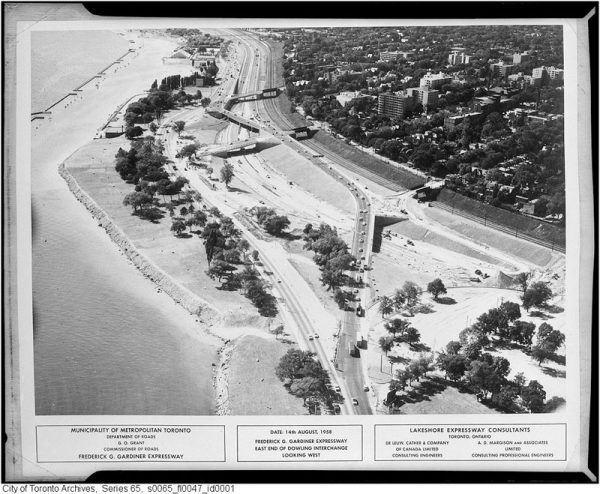The lost streets of South Parkdale
March 4, 2017 | By
Chris Bateman
South Parkdale during construction of the Gardiner Expressway in August, 1958. Image: City of Toronto Archives, Fonds 220, Series 65, File 47.
No Toronto neighbourhood paid for the Gardiner Expressway quite like Parkdale.
Before construction of the lakefront highway in 1958, the land south of Springhurst Avenue and the rail tracks was just like the rest of Parkdale: residential, consisting of mostly detached homes on spacious lots.
At the time, Dunn and Jameson Avenues passed over the rail tracks south to the waterfront and a tangle of smaller streets such as Laburnam and Starr Avenues, Empress Crescent, and Hawthorne Terrace intersected them.
South Parkdale was distinct enough to have its own railway station near the present-day foot of Close Avenue.
The first major road to penetrate the neighbourhood was Lake Shore Boulevard, which snaked south of Exhibition Place along the waterfront toward the Humber River in the 1920s.
In South Parkdale, Lake Shore Boulevard was created by merging and widening a number of residential streets, including Laburnam Avenue and parts of Starr Avenue.
There are subtle clues to the existence of these old streets. Lake Shore Boulevard subtly winds in the area north of Marilyn Bell Park, mirroring the former the routes of these lost streets. [...continues with many newspaper clippings, photos and much detail...]





